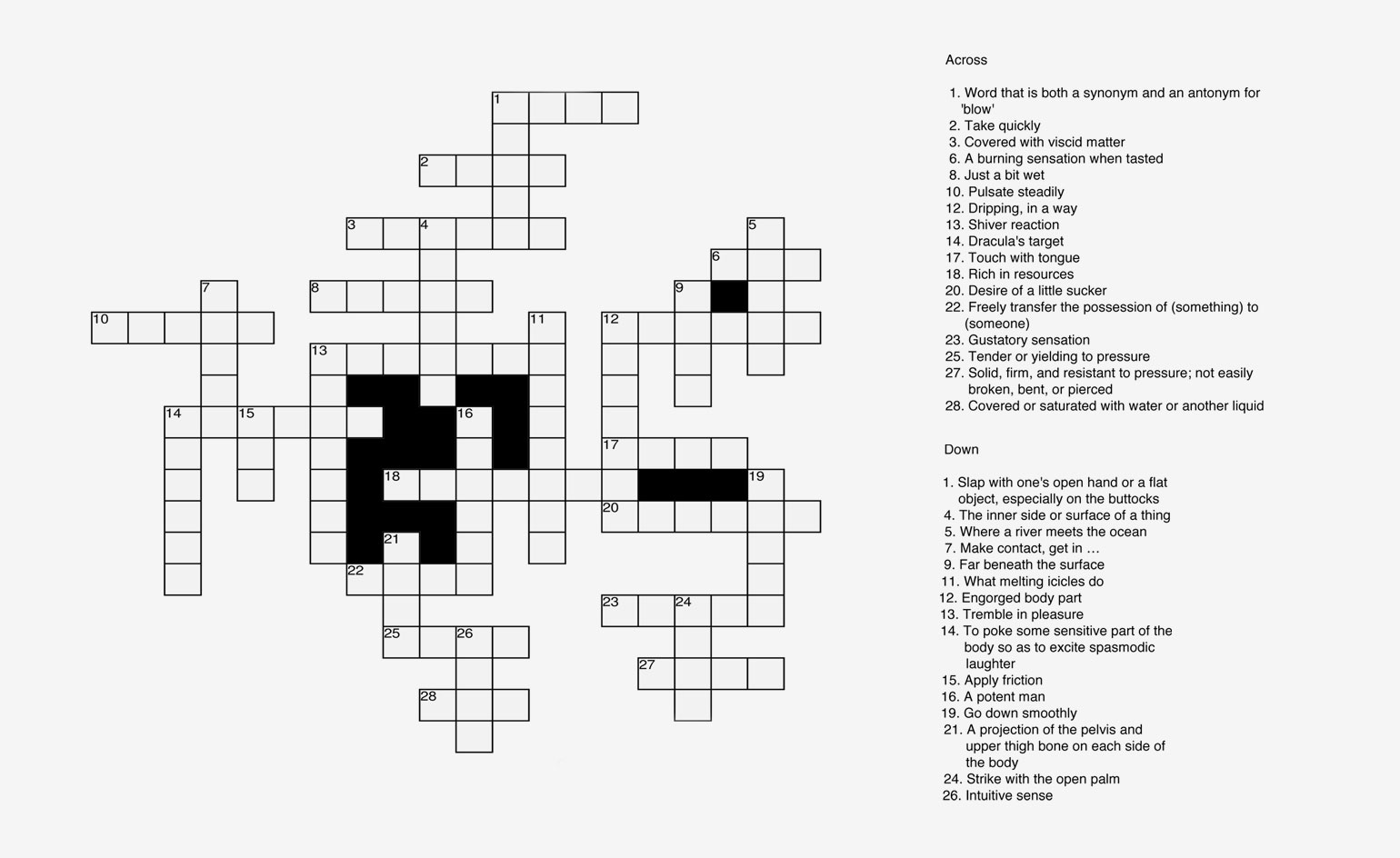Obscene, Lewd, Promiscuous, Shameless, Abandoned, Libertine, Libidinous, Licentious, X-Rated, Amorous, Bawdy, Carnal, Raw, Rousing, Earthy, Erogenous, Fervid, Filthy, Fleshly, Hot, Kinky, Lascivious, Lecherous, Raunchy, Salacious, Spicy, Stimulating, Titillating, Voluptuous, and Nice.
Ana Prvački's "Tent, Quartet, Bows and Elbows," opens on a string quartet performing energetically inside a small tent. As the four players inside the silken edifice perform, their flailing limbs are seen in outline, and the spectacle out of context—one that would be somber in any other circumstance—is laughable and evocative of kids fooling around at summer camp.
Prvački—a performance artist who was born in Serbia, and educated in Singapore and New York—has thought a lot about the intersection between the erotic and the humorous; her new solo show Porn Scores, at 1301PE Gallery, has a clear message, one that is too easily forgotten: art is fun, music is sexy, sex is funny. The show is primarily populated with sheets of classical scores interspersed with delicate illustrations of male and female reproductive organs.
On the subject of eroticism and humor, Prvački says, "For me, eroticism is very much connected to humor. It is a new kind of eroticism, something between sexy and slapstick."
Regarding the show's relationship with music: "Studies of music rooms in 17th and 18th century France and Italy show that young girls and women were encouraged to play an instrument but not too well, it was understood that a daily and in depth experience of music would be too carnal for proper young women."
When Prvački is asked what she thinks about summer camp, she (characteristically) after a good laugh responds, "I think both of my interests in camping and sexuality go well there." Later, over email, she adds, "Thinking about your question from the other day, I think summer is all about the bees!"
It's either a good or a very bad time to be an artist working in the explicit, depending on how you feel about infamy. June 7th marked the unveiling of Anish Kapoor's evocative sculptures at Versailles. One piece in particular raised public ire: "Dirty Corner," Kapoor, in an interview with Le JDD, called the installation, "A mysterious sculpture of rusted steel 10 meters high, weighing thousands of tons, stones and blocks all around. Again sexual [in] nature: [it represents] the vagina of the Queen who took power."
Prvački's use of the anatomical puts her in the same class as a few other artists, most of whom have not been well received—Japanese artist Megumi Igarashi was indicted twice last year for her provocative kayaks made from a 3-D printed mold of her vagina—but to Prvački the use of the actual genitalia is very important. When discussing this, she brought up the Met Gala this year, in which it was noted that numerous attendees were wearing "naked dresses" that exposed almost everything except for the pudenda. "I thought, 'what a strange thing, culturally. What does that mean? Does this mean that people are so afraid of the imagination, that they would rather go naked?' I don't know. I think we definitely need some cultural acupuncture. So, I'm hoping that the show does that in a way."
Prvački's work often deals with humanity and our customs. Her exhibition for dOCUMENTA Kassel in 2012, called Greeting Committee, consisted of three parts: a conversation and training on etiquette with D13 staff, a series of six PSAs shown in service areas and a key note lecture by Professor Kwame Anthony Appiah. When I asked if this came from her own personal experiences of living in so many different cultures (Communist Yugoslavia, Singapore, London, New York, Paris, Los Angeles) she says, "Part of my project was focused on the faux pas, on how the potential going wrong becomes an opportunity to connect with people through humor. Again, humor being that incredible opener."
At the end of "Tent, Quartet, Bows and Elbows," Prvački, a petite woman in a long, black dress walks into frame and unzips the tent, the performers pile out like clowns from a proverbial car, and she carefully zips it up again; just as the warm spring night folds around us foreshadowing the long hot summer to come.
Written by Amy Marie Slocum
Read More











